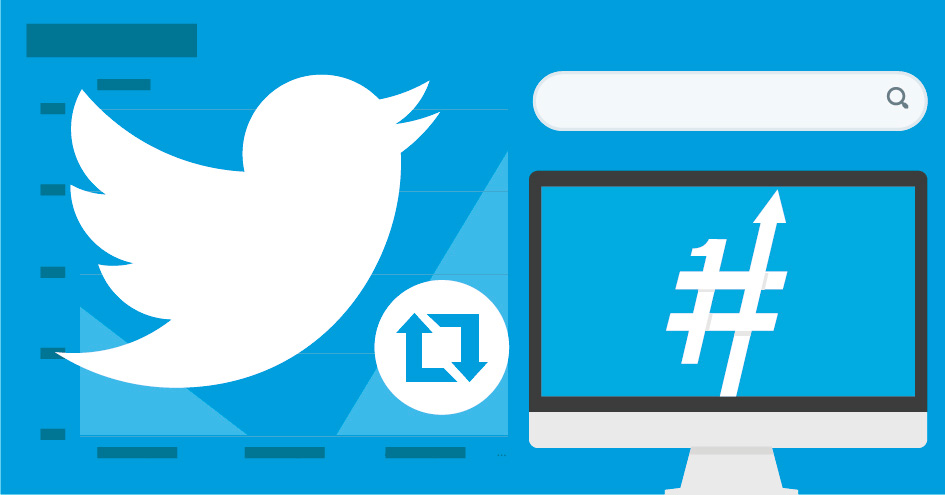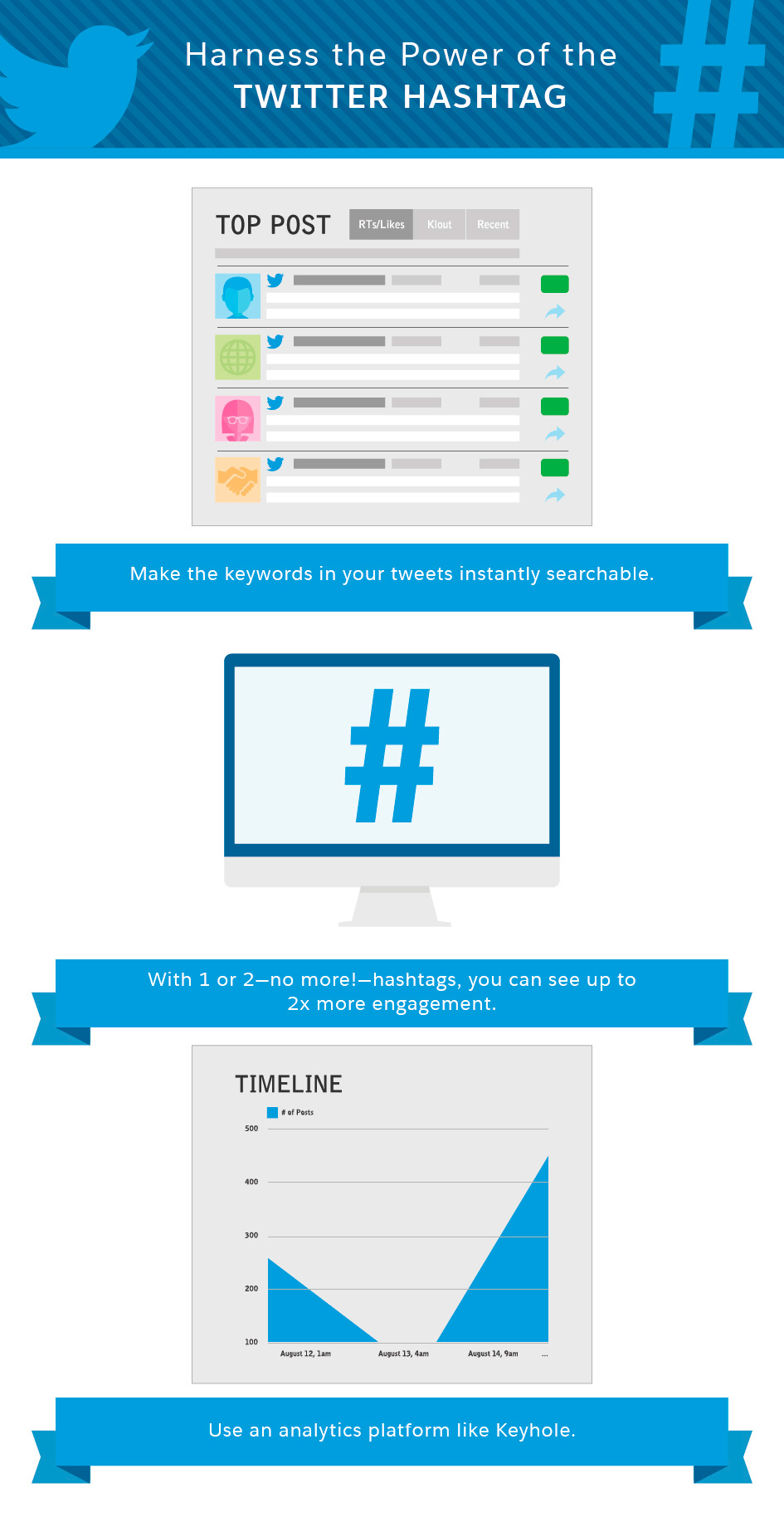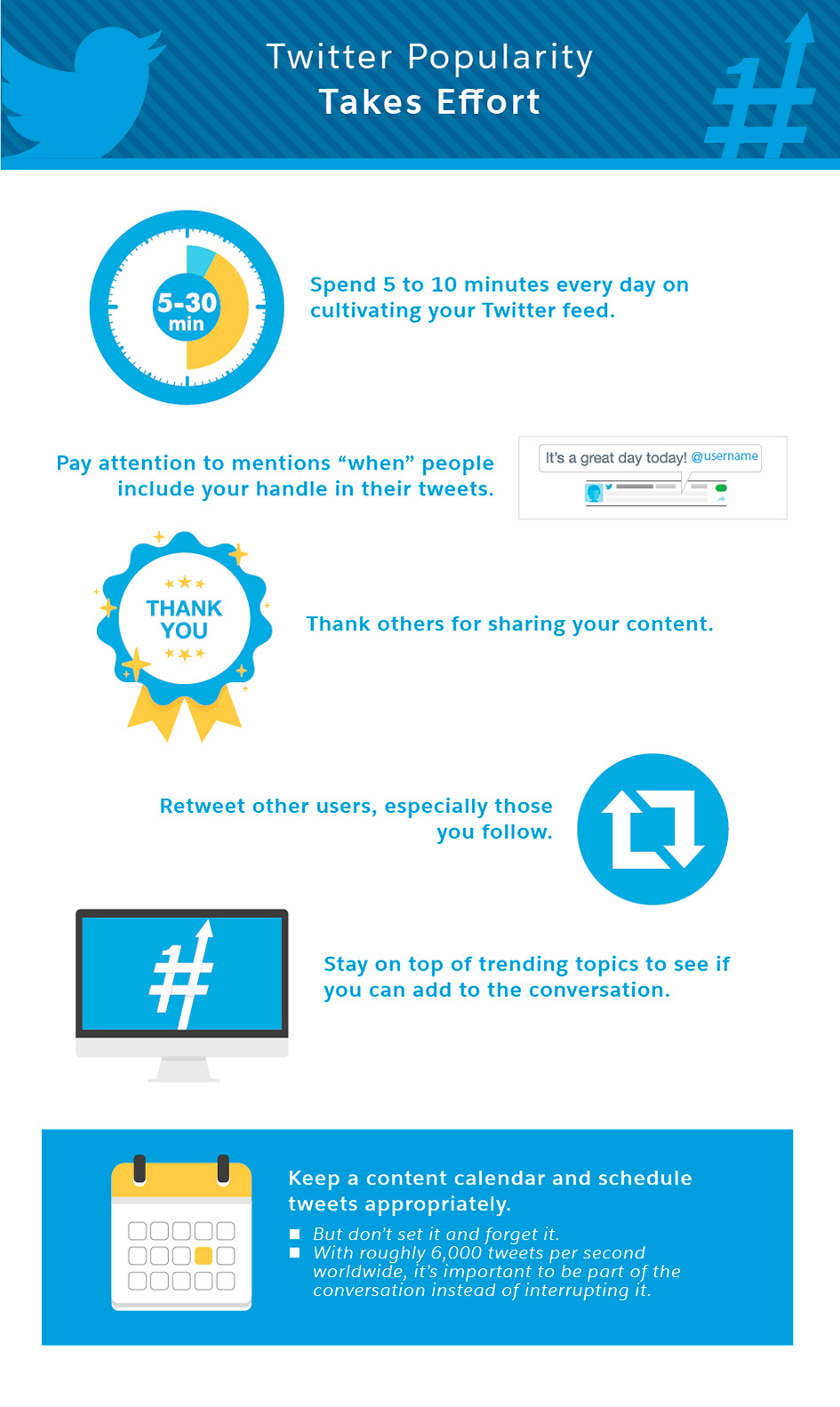
Whether you are attempting to land a lucrative marketing job or have been tasked with handling your company’s social media accounts, becoming a Twitter expert is a great way to gain visibility and engagement for yourself and your organization. After all, having the know-how to use social media and manage real-time conversations has been named one of the top skills today’s candidates should have.
As Twitter and other social media platforms continue to become an integral part of the customer service and marketing process, knowing how to reach goals with little to no budget can make you an important part of any business.

Twitter Chats
Participating in Twitter chats is one of the easiest ways you can interact with people in your industry without spending anything other than your time. These are chats that use a unique hashtag and usually take place at a scheduled time each week. A moderator tweets numbered questions (Q1, Q2, etc.) from their account throughout the chat hour, and then those participating answer with the corresponding answer number (A1 would be an answer to Q1, for example). All participatory tweets need to include the chat hashtag, or else those watching and interacting in the chat may not see them.
There are several Twitter chat tools, but some of the most useful free platforms include:
- TweetChat.com: After signing in with Twitter and entering the chat hashtag, this allows you to see the chat stream in a chronological view. You can also save pieces of chats to your account for reference later.
- Twitter Chat Schedule: Want to join a few Twitter chats but don’t know where to start? This schedule shows chats by the day of the week. You can sort results by topic.
- Twchat: This service is similar to TweetChat, but it makes the chat look more like an old-school chat room you may have used in the early ’00s. This format clearly displays chat questions and answers. Twchat also allows you to see a schedule of regular chats that use its service, which makes it easy to find more chats to participate in.
Besides the ability to actively participate in industry conversations, Twitter chats are a great way to get more followers, especially if your answers are thoughtful and you take part in the chat as it’s happening.
Hashtags
Hashtags make words instantly searchable in tweets. Turning keywords or phrases into hashtags in your tweets is a fast way to ramp up their visibility. It’s been proven that tweets that use one or two hashtags (but no more), can receive up to two times more engagement in the forms of retweets, favorites, and replies.
If you want to see the popularity of specific hashtags before including them in your tweets, use an analytics platform like Keyhole or Tagboard. Keyhole shows you tweets that use the hashtag you search for, which is a great way to find inspiration for writing your own content.

While Keyhole does offer a paid service in addition to a free search, there are lots of free data visualization tools you can use to research hashtags: A blog post by TalkWalkermentions a few that can help.
Follow Industry Influencers and Existing Connections
Many great Twitter accounts have gotten tens of thousands of follows by following anyone who follows them. While this isn’t the best tactic, it does follow sound logic: If you follow users and companies you are genuinely interested in, they may do the same for you.
However, following industry influencers is helpful for budding Twitter marketing pros in other ways. It gives you great content to interact with through retweets and replies, and is also a source of inspiration for your own content.
If you don’t know how to find people to follow, Twitter’s advanced search makes it easy to look for specific tweets or users in a specific category. In the search results, just click on the “Accounts” tab.

There are also tons of blog posts in which bloggers and companies have compiled leaders in their industries. Search for “[industry name] Twitter influencers” and you’ll find an instant list of suggestions.
Another way to find people to follow is to allow Twitter to scan your email address book to see if any of your existing connections have accounts. Once you follow them, they may follow you back, which can help not only increase your follow count, but also give you another platform to engage business contacts, colleagues, and friends and family.
Daily Engagement
Your Twitter stats will continue to increase if you make it a priority to spend 30 minutes per day on engagement. These are the daily things you can do in under half an hour to ensure your Twitter presence continues to improve:
- Check your mentions and thank users for sharing your content:This shows users you monitor social shares and appreciate the time they took to share your content. Thanking others will likely lead to more shares.
- Retweet useful links or information from users you are following:
Add a comment to your tweet to add your own spin. This may lead to a reply from the original tweeter, which can lead to potential new followers or even business, depending on the topic. - Check trending topics and see if there is potential to interact:
If you’re new to social media, don’t newsjack, which is when businesses try to tie their products to current events. Instead, focus on providing an opinion or insight into the topic that fits well with the tone of the discussion. - Schedule new tweets to post that day or in the next few days
This is covered later in this post, but daily scheduling of content can help it stay fresh and top of mind.
Because Twitter moves so fast (about 6,000 tweets per second worldwide), it’s important to check in daily and interact with your community. Don’t get lost in the bustle of all the other activity by users and companies.

Share Great Content
Being a resource for great content is the quickest way to gain a loyal following. Content curation doesn’t have to be tedious or time consuming. There are a few free resources that give you content to share on a daily basis:
- DrumUp: As of press time, this service is free. It connects with Twitter, LinkedIn, and Facebook (profiles only for now) and gives you content suggestions based on keywords you use. If you see a post you like, just click “schedule,” and it will add it to a queue that publishes a tweet at the times you set up. It can also email you a daily digest of new content to schedule so you’ll never forget to add more to your queue.
- Google Alerts: Google Alerts is still the best free service for getting search results emailed to you based on keywords. You can select to only receive news results if your aim is to tweet more timely posts.
- Newsle: This free service connects with your LinkedIn, Facebook, and email address book to bring you content your connections have published or been mentioned in online. Sharing content those in your network have shared is a great way to show support. They will hopefully do the same for you.
- Industry and blog newsletters: If you have a favorite industry organization or blog, subscribe to their newsletter or RSS feed. It’s easy to share content from organizations or publications you already know and trust.
In lieu of receiving emails with content suggestions, you can also use five to 10 minutes of your daily engagement time to search news.google.com or Google’s main results for new content based on specific keywords. Search engines are getting better and better at almost instantly indexing content, so this is often the freshest place to find things to share on Twitter.
Regular Scheduling
Once you find content you want to share, it’s time to schedule it. Many services are switching to a “queue” type of scheduling, where the next tweet at the top of your queue is sent at the times you implement. However, if you want to schedule manually, it’s easiest to do it daily during your engagement time, or all at once at the beginning or end of the week. Besides the two mentioned, you can also schedule posts on other platforms like LaterBro or TweetDeck. Currently, you can’t schedule tweets within Twitter.com itself.
If your tweets need approval from a manager, consider creating a content calendar in Excel or Google Sheets that uses a set template to create new tabs each month or week.Content calendars make it easy to ensure you are promoting your own content, as well as anything else you want to cover such as events or new product launches. Twitter also has an editorial content calendar tool that lets you see key events each month in certain countries and how you can schedule around them in order to gain visibility for your company.
By participating in Twitter chats, curating content, scheduling posts, and focusing on engagement, you or your company can become an influential Twitter account. Whether you are an individual looking to increase your personal branding, or an organization with a small budget wanting to be more active on social media, make Twitter engagement a daily habit. These free tools make it possible to share great content and engage with those who have similar interests.
To view the original article Click Here

No comments:
Post a Comment